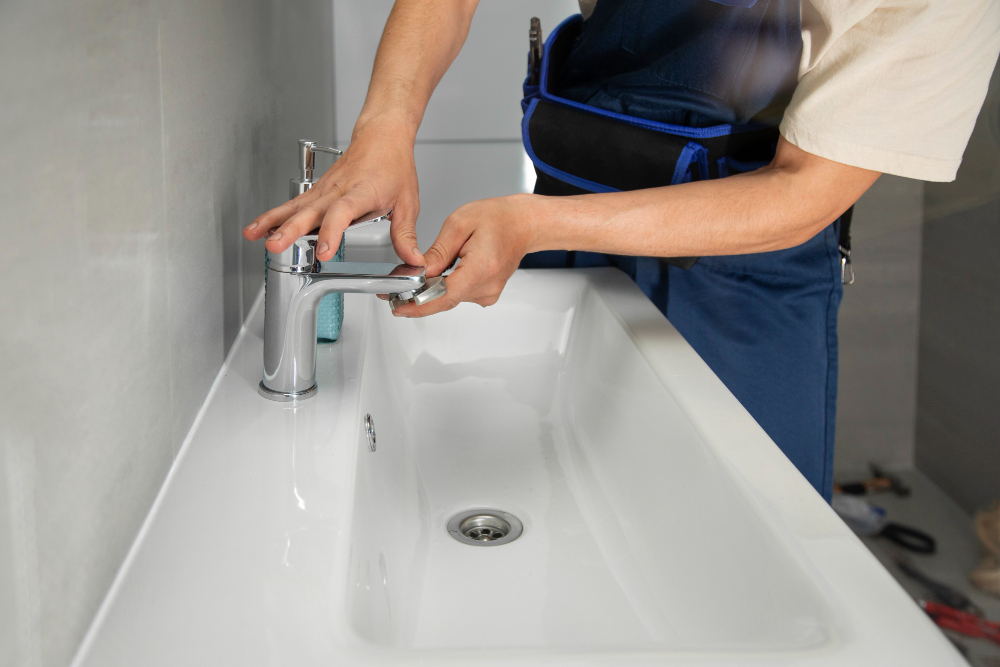Installing a 3-hole sink faucet DIY is easy. It’s a rewarding DIY project that will also save you money on plumber fees. But you need certain tools to get the job done.
What tools and materials would you need to install a 3-hole sink faucet? The tools you’d need are an adjustable wrench, screwdriver, and a few other things. Let’s start with:
Table of Contents
ToggleThe Essentials
Adjustable Wrench
This versatile tool tackles various nut and bolt sizes, which are crucial for loosening the old faucet and tightening the new one during installation.
Screwdriver
A flathead screwdriver is handy for prying off decorative faucet caps or tightening screws on mounting brackets. A Phillips head screwdriver might be needed depending on your faucet’s design.
Basin Wrench (Optional)
This specialized wrench with a thin profile navigates tight spaces behind the sink to loosen and tighten faucet nuts. While not always necessary, it can be a lifesaver if the clearance is limited. Some faucets may come with their own wrench for this purpose.
Additional Tools
- You’d need a flashlight to shine a light into hard-to-reach areas under the sink to see what you’re doing.
- Catch any drips or spills with a basin or pan while disconnecting the old faucet’s water lines.
- Protect your cabinets and floors from water splashes or stray tools with drop cloths.
- Create a watertight seal around the faucet’s threads where it connects to the sink using Plumber’s putty or Teflon tape. Some faucets may use pre-installed gaskets instead.
Optional Materials
Depending on your situation, you may need these items as well:
- Channel-lock pliers—they are useful for gripping stubborn nuts or bolts that won’t budge with an adjustable wrench;
- Utility knife—cut zip ties or hoses if needed during the removal of the old faucet;
- New faucet supply lines—if your existing lines are worn, corroded, or too short, you might need new ones that match the length required for your faucet model.
| Pro-tip Turn off the water supply valves under your sink and shut off valves for both hot and cold water lines before starting. |
Having the right tools makes the installation process smoother and avoids frustration. If you need clarification on any of the steps, consult the instructions that come with your specific faucet model or consider watching video tutorials online that demonstrate the installation process for your faucet type.
Remember, safety first! If you’re uncomfortable with any part of the faucet DIY installation, don’t hesitate to call a professional plumber.
Need Further Assistance?
Visit our website for more tips like this or contact us if you’re looking for quality and affordable 3-hole sink faucets.


